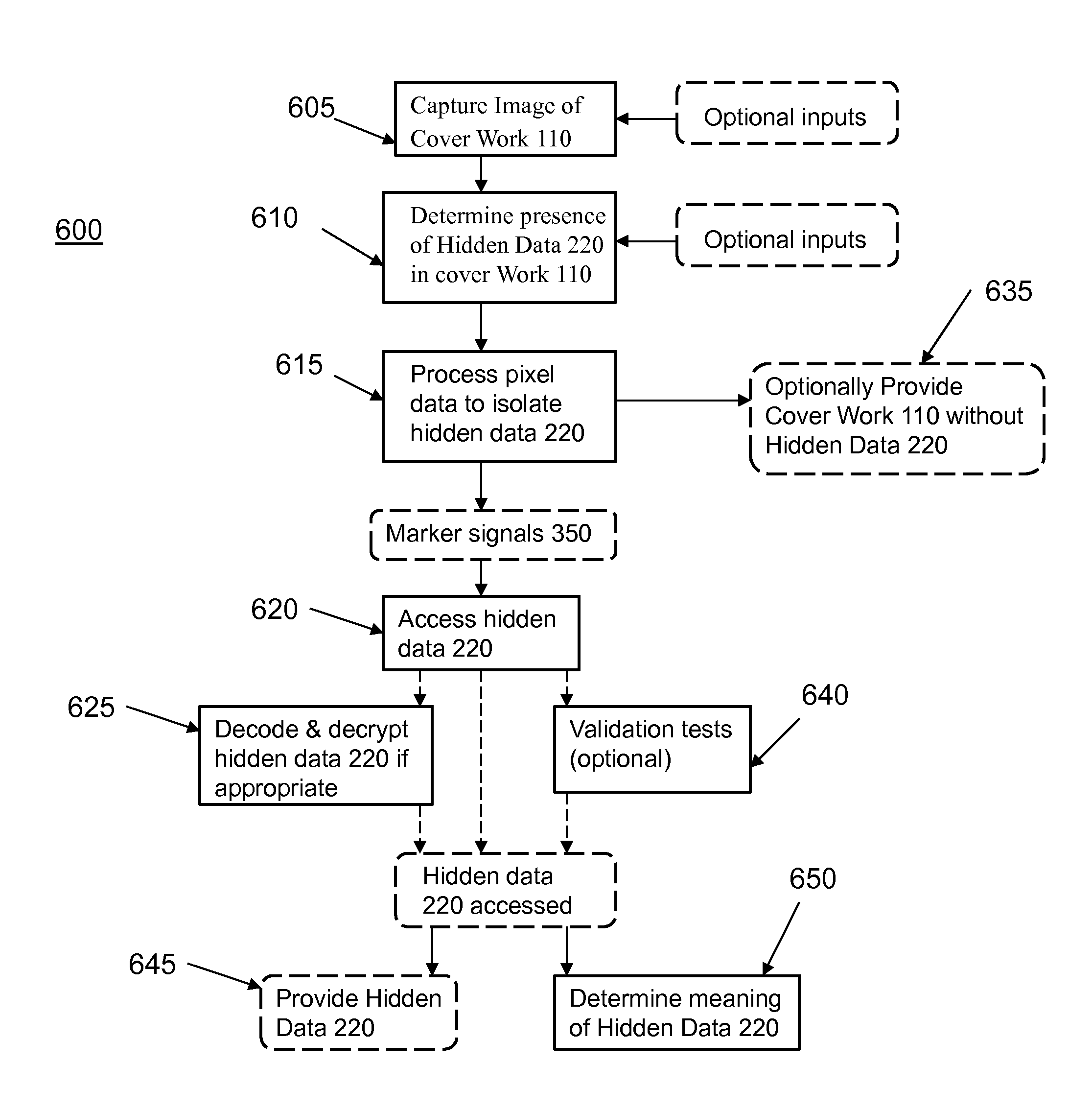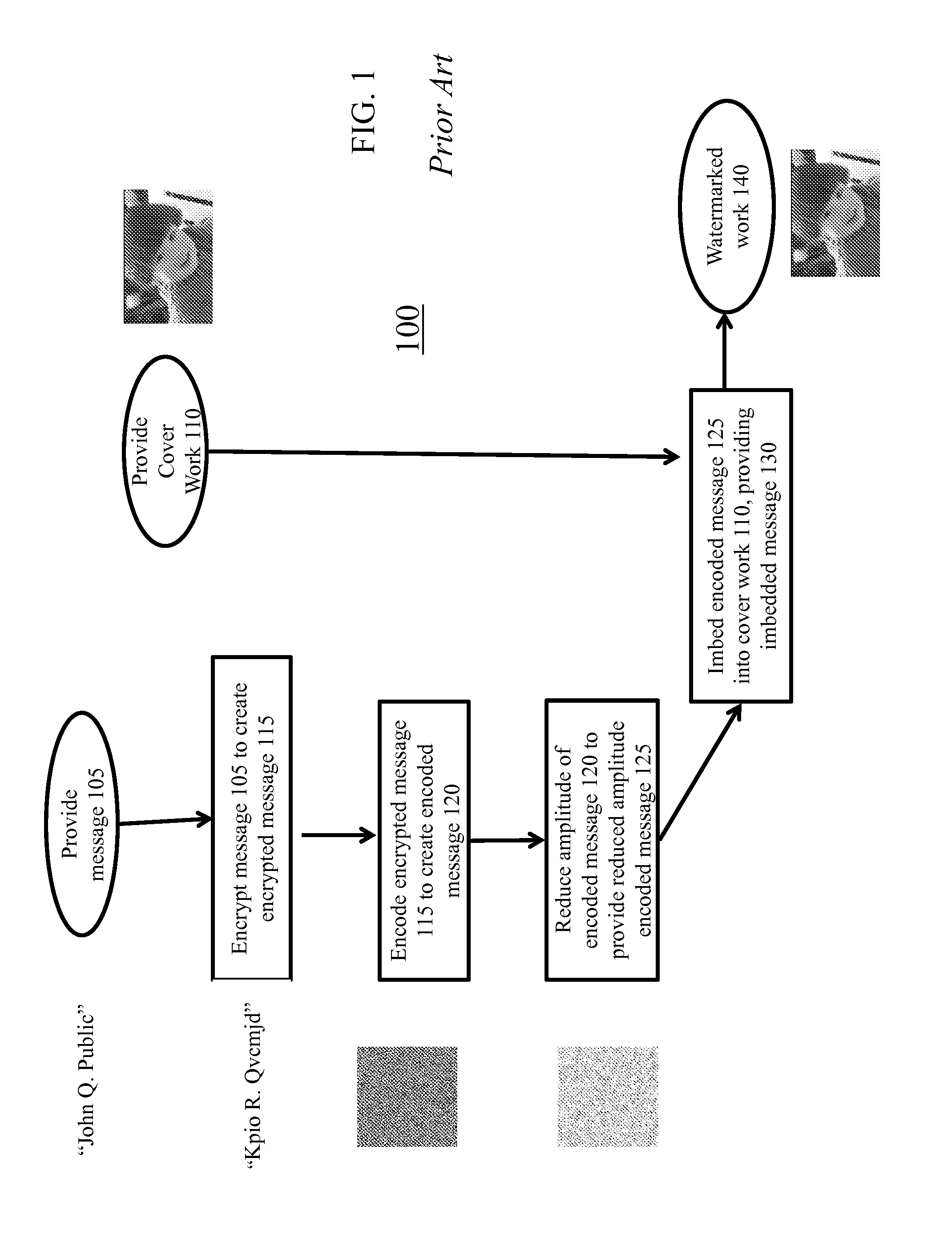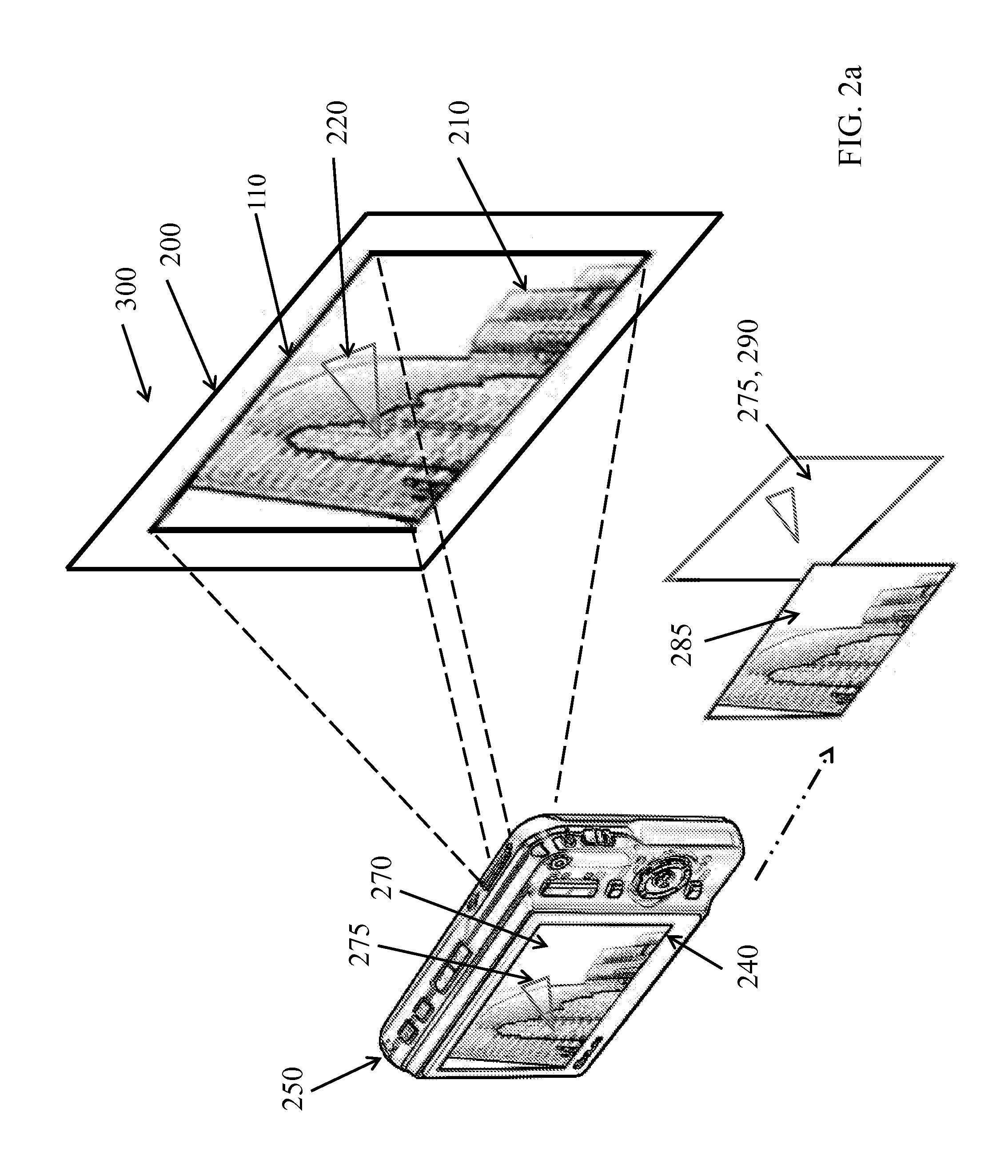Spectral edge marking for steganography or watermarking
a technology of steganography and spectral edge, applied in the field of data hiding, can solve the problems of insufficient direct storage of website links, insufficient information capacity and density, and fragile digital watermarks
- Summary
- Abstract
- Description
- Claims
- Application Information
AI Technical Summary
Benefits of technology
Problems solved by technology
Method used
Image
Examples
Embodiment Construction
[0045]The present invention will be directed in particular to elements forming part of, or in cooperation more directly with the method and apparatus in accordance with the present invention. It is to be understood that elements not specifically shown or described may take various forms well known to those skilled in the art.
[0046]The primary goal of the present invention is to provide an improved method for data hiding, whether for steganography or watermarking, and particularly for digital steganography or digital watermarking, that enables comparatively large amounts of data to be embedded in printed matter, and particularly images, and retrieved there from, without this data being generally perceptible to one or more human viewers. Depending on the embodiment of the present invention, and the attributes of the cover work 110, exemplary data stored therein could include Internet Protocol version 6 (IPv6) website addresses (128 bits), a human readable or textual website address (o...
PUM
 Login to View More
Login to View More Abstract
Description
Claims
Application Information
 Login to View More
Login to View More - R&D
- Intellectual Property
- Life Sciences
- Materials
- Tech Scout
- Unparalleled Data Quality
- Higher Quality Content
- 60% Fewer Hallucinations
Browse by: Latest US Patents, China's latest patents, Technical Efficacy Thesaurus, Application Domain, Technology Topic, Popular Technical Reports.
© 2025 PatSnap. All rights reserved.Legal|Privacy policy|Modern Slavery Act Transparency Statement|Sitemap|About US| Contact US: help@patsnap.com



